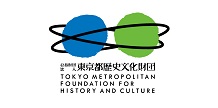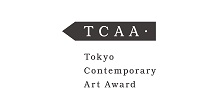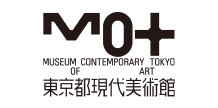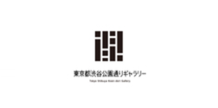Sonia FERNÁNDEZ PAN
- TOP >
- Archives >
- Residency Program >
- Sonia FERNÁNDEZ PAN
Curator Residency Program
update: 2025.1.24
Sonia FERNÁNDEZ PAN
| Participating Project | Curator Residency Program |
|---|---|
| Activity Based | Berlin |
| City / Place stayed | Tokyo |
| Period | 2025.1 - 2025.3 |
Purpose of the residency
Departing from the Fueiho law, which since 1948 imposed strict regulations on Japanese nightclubs, and the Let's DANCE movement, which actively worked to amend this law in 2015 and its repressive actions, I would like to relate with practices of resistance and political imagination of dance culture in Japan. The Fueiho law appears in my book "Edit" as a rumour and an element that allows for different speculations related to the global suspension of dance culture during the pandemic. It also becomes a theoretical stimulus for imagining community forms that are based on pure presence, togetherness, elusive knowledge and emotional synchronicity. From here I would like to produce a spoken essay that includes different voices and experiences, from lawyers who managed to make dancing a right, to musicians, artists and others connected to the Tokyo club scene. With them I would like to think about alternative realities from the ethics and politics of dancing in times of systemic crisis and violence. What stories does dance tell us? What can we learn from dance floors about community making? What is the potential of these ‘sensitive utopias’ in an age of political instrumentalisation of feelings and escalating violence? In thinking of dance gestures as a commons, what are the moving gestures that enable alliances between people?
Plan during the residency
- I would like to contact members of ‘Let's Dance’ to talk about the Fueiho law and the social and political achievements of their movement.
- Through friends, musicians and collaborators from previous projects, I would like to get in touch with dj's, musicians and club dancers for a series of recorded conversations to work with.
- Holding a gathering with artists from the Tokyo scene and the TOKAS residency to identify areas of contact between club culture and artistic practices in order to think-speculate-plot together.
- Sharing my research from the dance floor and related projects.
- Research Tokyo's prolific, multi-genre electronic scene.
- Production of a final audio piece (podcast format)
Activities during the residency
The departure point for my research was the Fueiho Law (1948) and how it still influences the dancing scene in Japan, albeit less intensely than in previous years thanks to the Let's Dance movement (2015). While I initially focused on learning more about this law, as my research progressed, I decided to use the personal experience of the electronic music scene as my main methodology. Inspired by the logic of dance and how gestures connect organically with one another, I let myself be guided by my numerous encounters with members of the Tokyo and Kyoto scenes, from dj’s to artists to dancing peers. So I went to as many dance floors, concerts, radio stations and even demonstrations as I could, as well as establishing personal relationships with different people and connections for the future. I also conducted several interviews, some of which have resulted in published or forthcoming podcasts. My experience in Japan (Tokyo, Kyoto, and a brief trip to Osaka) has also being present in projects that are not strictly related to my research at TOKAS.
Interview setup
Daytime dancefloor
Protest rave in Tokyo
Dancefloor researchers exchange
Overview of the residency
My immersion in Tokyo's electronic scene meant discovering things and situations that I had been searching for or missing for a long time during my extensive experience on the dance floors of the European cities I know. Without expectations, but with a lot of curiosity, I arrived in Tokyo to find a very supportive community of musicians, dancers and DJs. I also experienced exceptional musical quality and dancefloors where the roles of organiser, DJ, and dancer were very much blended. The ‘felt utopia’ that some theorists associate with the club experience is something I also experienced, renewing perceptions and theories that I have been working on for years and am still processing. While music had interested me more than sound as a place for social interaction for years, during my residency, sound as a category to think about came forward again. Likewise, thanks to listening to many DJ sessions, I reawakened a relationship with music very similar to the one I had at the beginning of my journey into electronic music more than two decades ago. Added to this was the opportunity to engage in formal and informal conversations with numerous individuals who were very generous in their desire to ‘think from music and dancing’ with me. The residency in Tokas not only allowed me to do research, but also to be part of a scene for a period of time. If the Fueiho Law was like a main beat, my time in Tokyo made my research way more polyrhythmic, bringing back old desires and new curatorial and artistic perspectives for future collaborations connected by irregular gestures and movements, like happens in most of my projects.
All of this was also made possible by the curious and supportive spirit of the Tokas team, who broadened my understanding of the intersection
between art and clubs in the context of Tokyo and Japan.
Lecture at TOKAS
Former Contact Club
RanPan sticker around Tokyo







